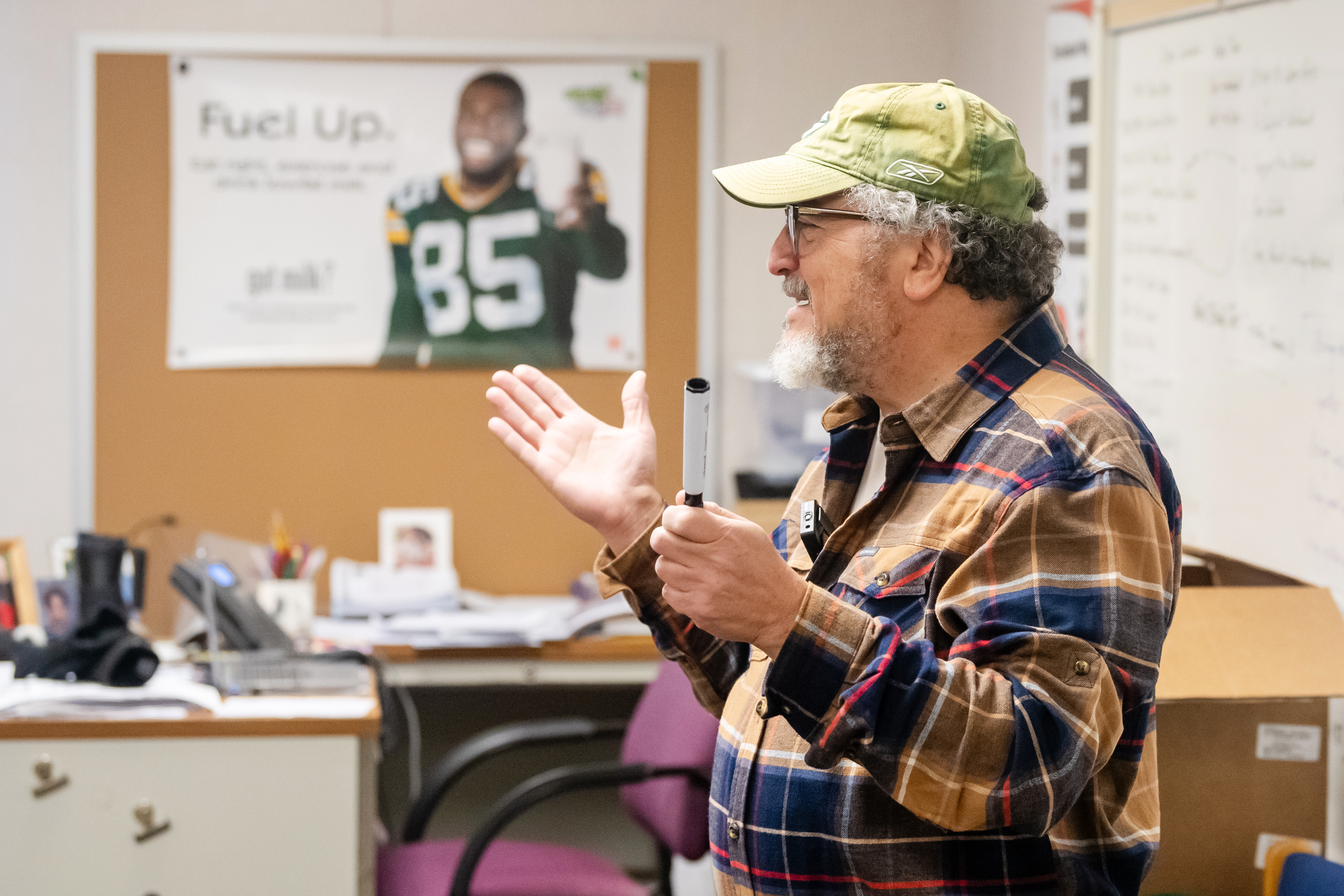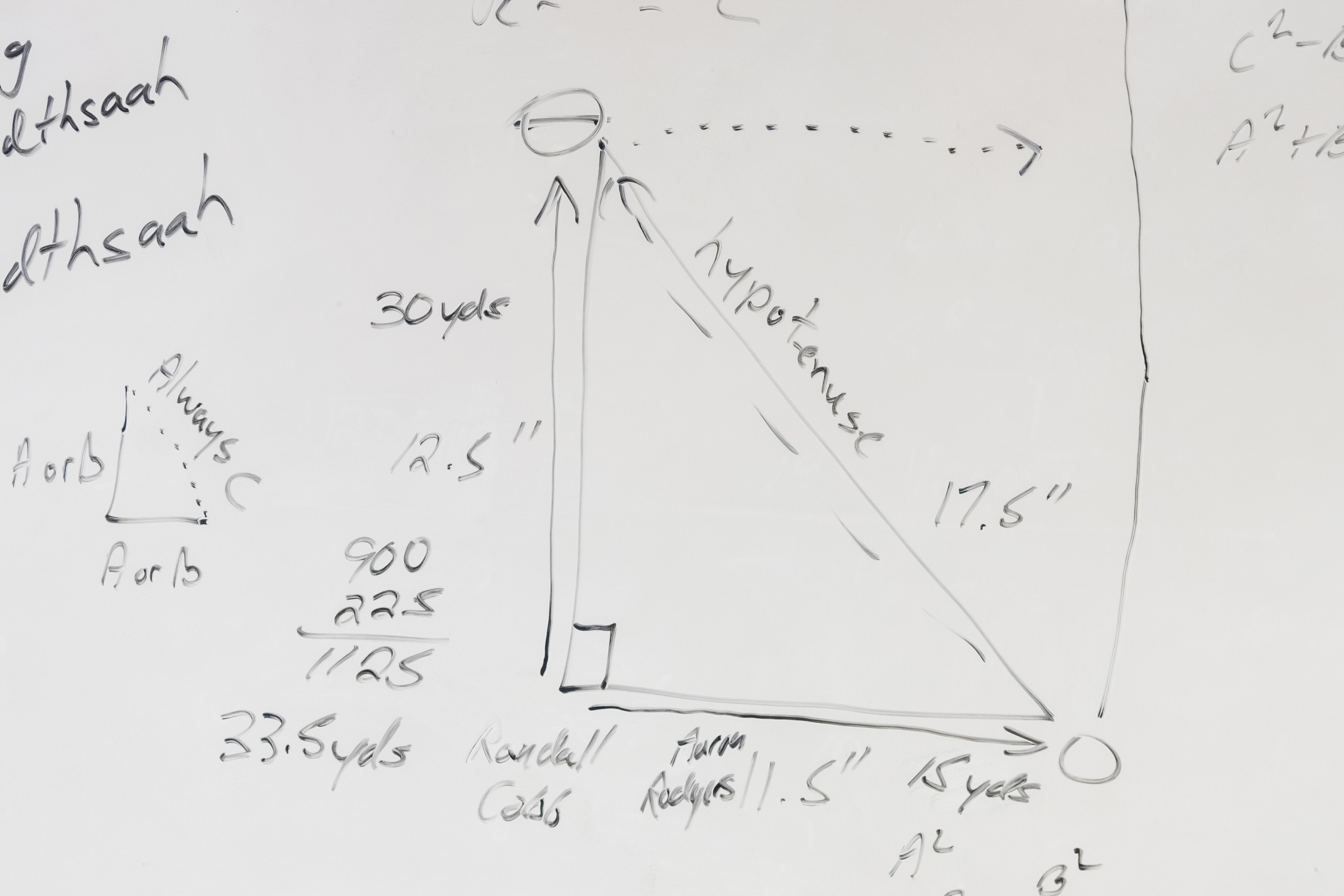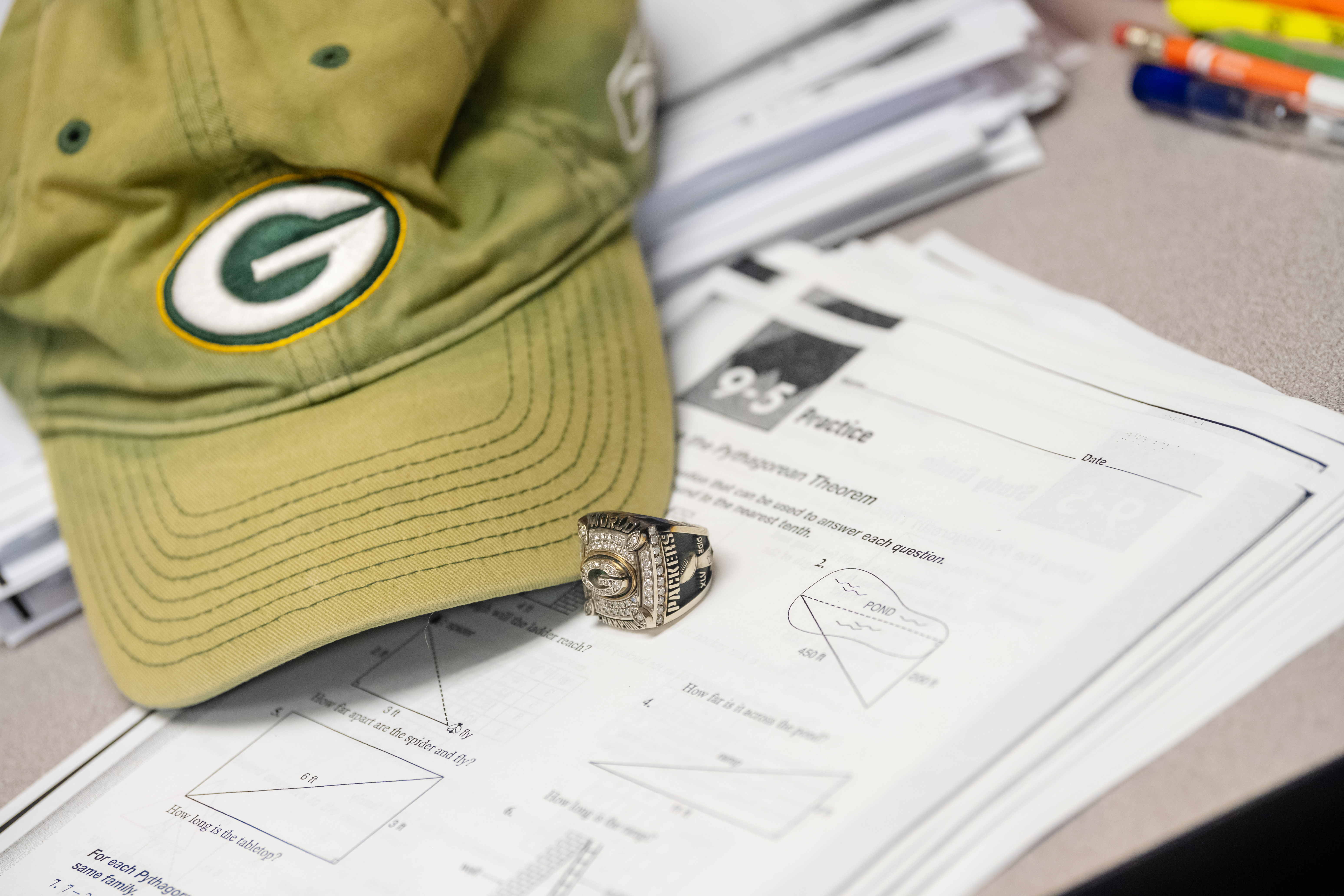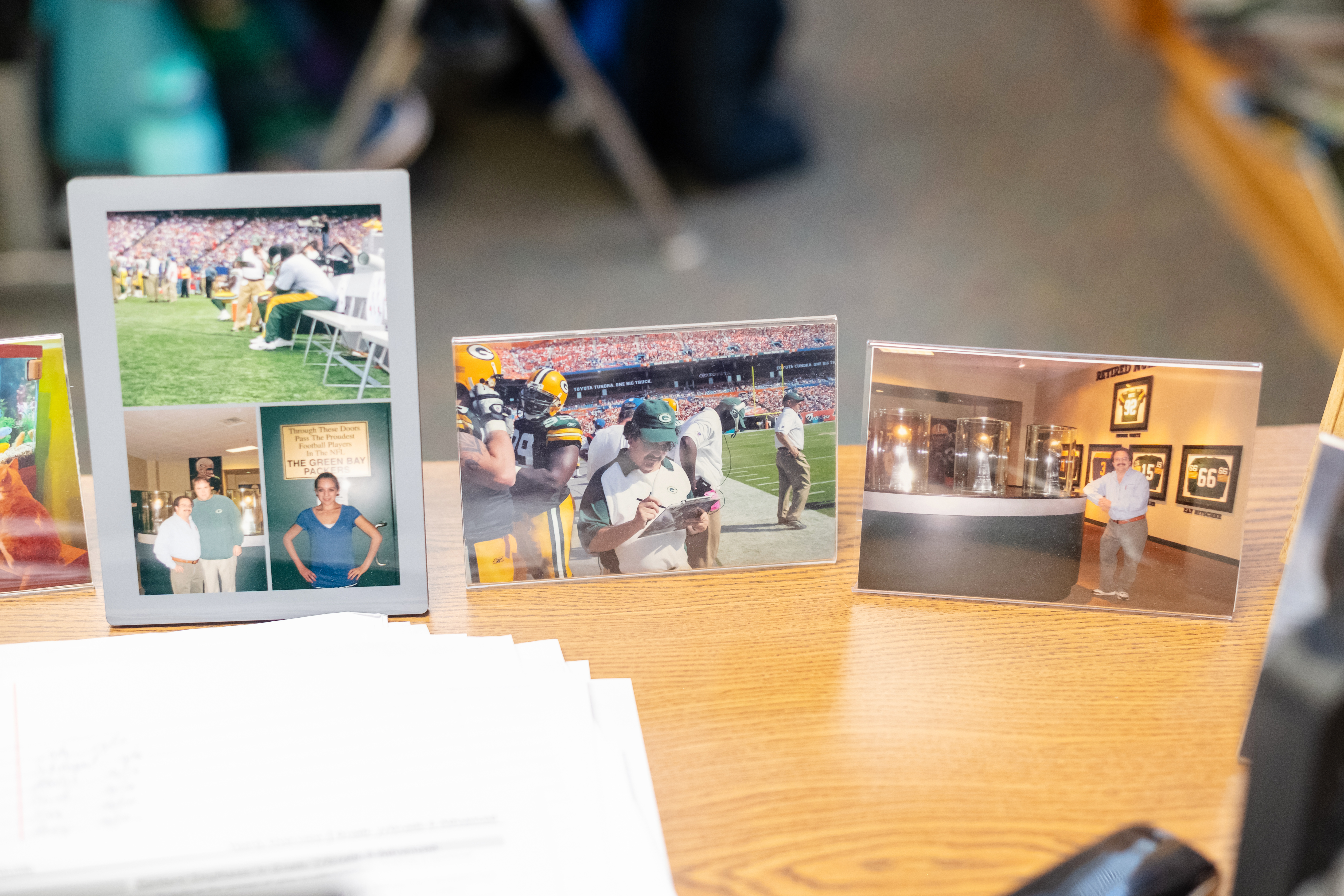"Math Is All Around Us," FCPS Teacher Uses Football to Teach Pythagorean Theorem
Twenty-year FCPS math teacher Paul Malc is wearing a Green Bay Packers hat as he embarks on a lesson about the Pythagorean Theorem with the sixth graders in his class at Mantua Elementary School.
The square of the hypotenuse, the longest leg of a triangle, is equal to the sum of the squares of the other two legs, Malc reminds his students. This fundamental rule of geometry is put to use every day in real-world situations, including in every game played in the National Football League, he explains.
Take former Packers quarterback Aaron Rodgers, Malc notes. When Rodgers takes a snap in football and runs laterally to avoid linemen rushing at him, his receiver rushes down the field with his back to Rodgers. Rodgers knows exactly the right amount of time to wait to throw the ball to the receiver so the arc of the pass lands close enough for the catch to be made.

“The question is how far did that ball travel?” Malc asks his students, noting the Pythagorean Theorem can be used to answer his question. “There is geometry in football, there is engineering in football, there are all sorts of amazing things that the textbook is never going to tell you. Math is all around us.”
The two angles in Malc’s diagram on his whiteboard show a triangle with a vertical leg of 30 feet (the distance between the line of scrimmage where Rodgers stands and the line where his receiver is), a horizontal leg of 15 feet (the distance Rodgers has hypothetically run laterally to avoid linemen) and the hypotenuse, or the leg of the triangle that represents the path the thrown football takes.

“Now if Rodgers had just thrown the football 30 yards, because that’s the difference between the line he’s at and his receiver, he’s not gonna be successful,” Malc says. The receiver would “turn around, look for the thrown ball and it’s not gonna be there, it’s gonna be 3.5 yards short if the quarterback threw the ball the vertical leg.”
“Rodgers has got to throw the hypotenuse,” Malc says. He says the Pythagorean Theorem will tell us how far the ball needs to go.
Malc — an avid Packers fan who owns a Super Bowl XLV ring bearing his name and a helmet signed by former quarterbacks Rodgers, Brett Favre, and Bart Starr — has his own history with the NFL. He says he stumbled into doing occasional sideline work for the Packers after making chance connections with team officials when an item he’d bid on at auction arrived damaged.

The team not only made it right by fixing the damaged item, but friendships developed between Malc and some team officials. As he attended games, the Packers found one day they needed help with monitoring cable wires on headsets to ensure no one tripped and the wire didn’t get tangled, he says. Malc was happy to pitch in on the sideline work.
“When you work for the Packers, you become a lifer,” Red Batty, head equipment manager for the Green Bay Team says. “I’m 65 years old, I’ve been with the Packers for 30 years and I originally met Paul when he wanted to get that helmet fixed.”
“Our relationship grew and grew, we got to know each other’s families,” Batty says of Malc. Eventually, as Malc got to know more team officials, they learned he worked as a math teacher, Batty says.
They jumped on the chance to enlist him as an occasional defensive line statistician. Malc says he worked every game he was assigned.

“I was not their regular guy, but I would meet them for some East Coast games: I did everything from the Giants to the Dolphins,” he says. “While the coaches are watching the game, walking up and down the sidelines, I would keep track of how many plays each of our nine defensive linemen had been in there and then report to the coaches which player rotations needed to be implemented.”
It’s no surprise Malc’s math skills were useful in pro football, equipment manager Batty says.
“Math is most certainly integral to football— you have a field where you have to map out your plan, player statistics and salaries that certainly involve math, during the game you have to know you need 10 yards for a first down, when you score a touchdown you gets six points, a field goal is three points all of which is added to make a final score,” Batty says. “If you don’t have math skills, you won’t be able to keep up in football or life.”
Malc tells his students he wants them to realize the importance of math in sports as well, as he presses them to see if any have solved the hypothetical Rodgers math problem he posed at the beginning of class.

Sixth-grader and football fan Marc Obando says he already has the answer: the square of the triangle leg that is 30 yards — the distance between the scrimmage line Rodgers stood on and the one his receiver stood on — equals 900, plus the square of the 15-yard leg that Rodgers ran to avoid the opposing team’s linemen is 225, he calculates. The student then adds the 225 to 900, gets 1125, and calculates the square root to determine how far the ball must be thrown: 33.5 yards.
“You know I’m gonna check your work!” math teacher Malc says. “I already did,” replies student Marc Obando.
“Well, 33.5 yards it is, you’re absolutely right!” Malc says.
“Does everybody see how geometry is fundamental to pro football? If you ever wonder if there’s a space for math in football, I hope you can see it now,” Malc says. “My love is football, but there’s a place for math in every sport. If you turn the page, the next problem wants you to calculate the distance a puck travels in a hockey game…”